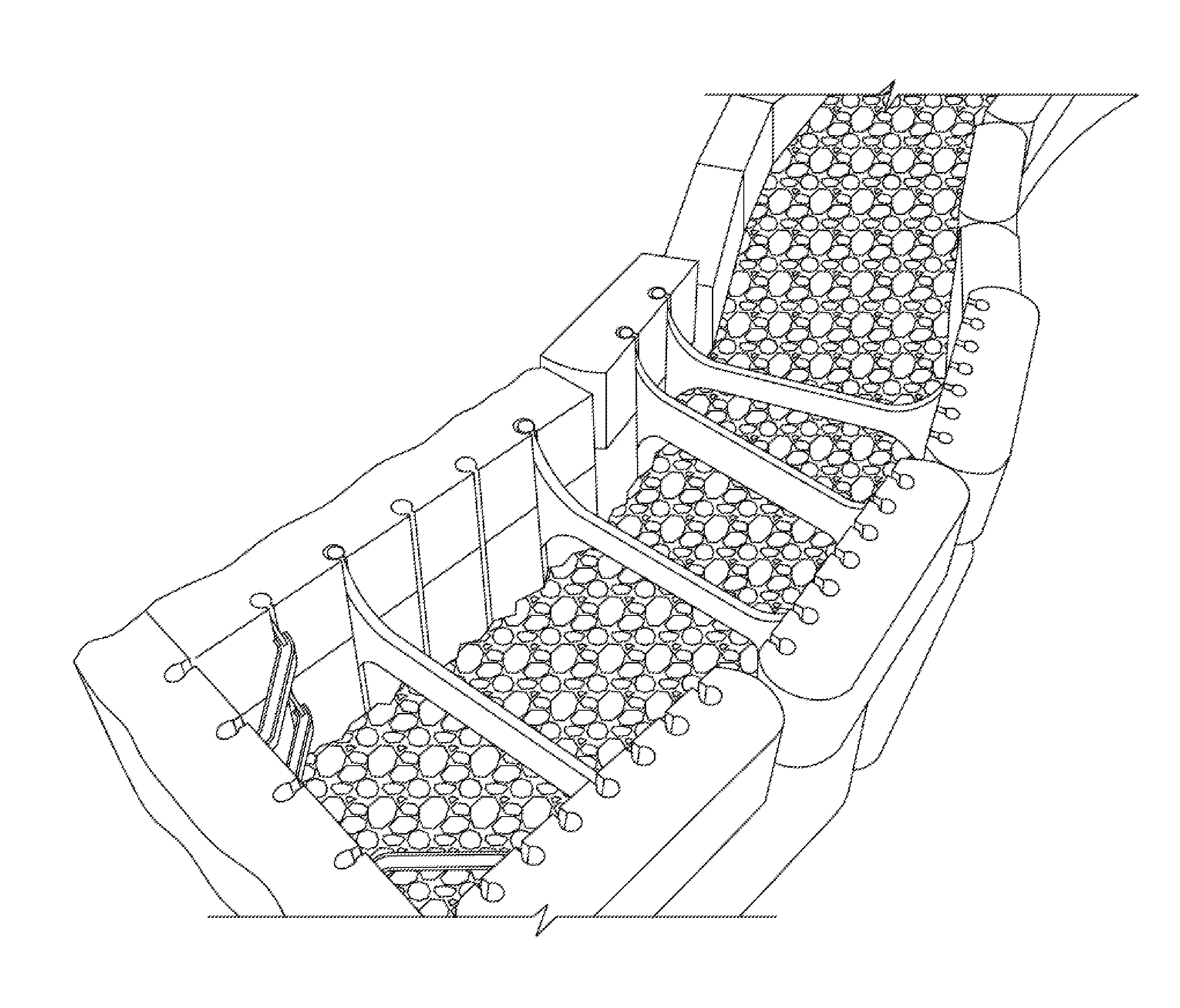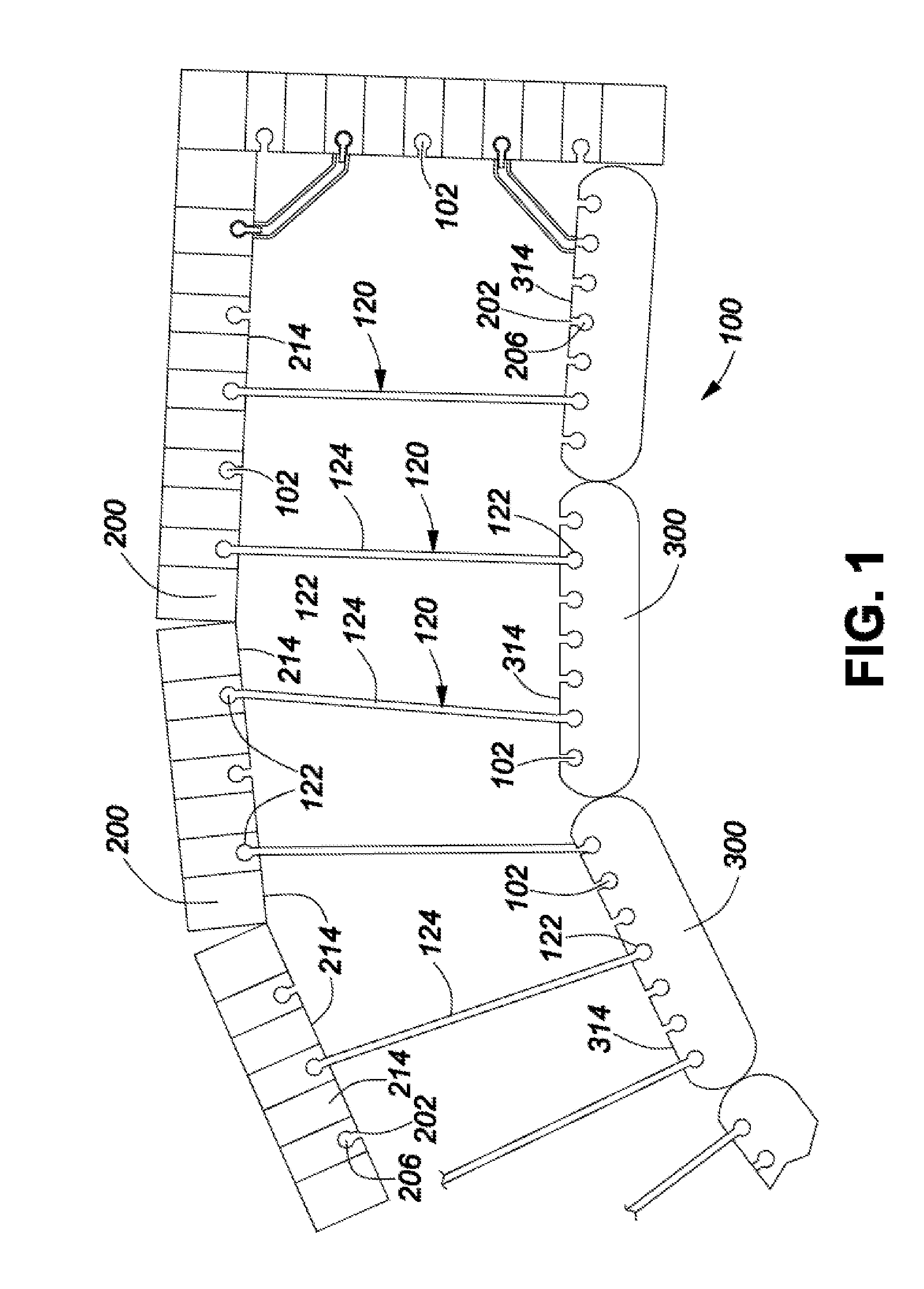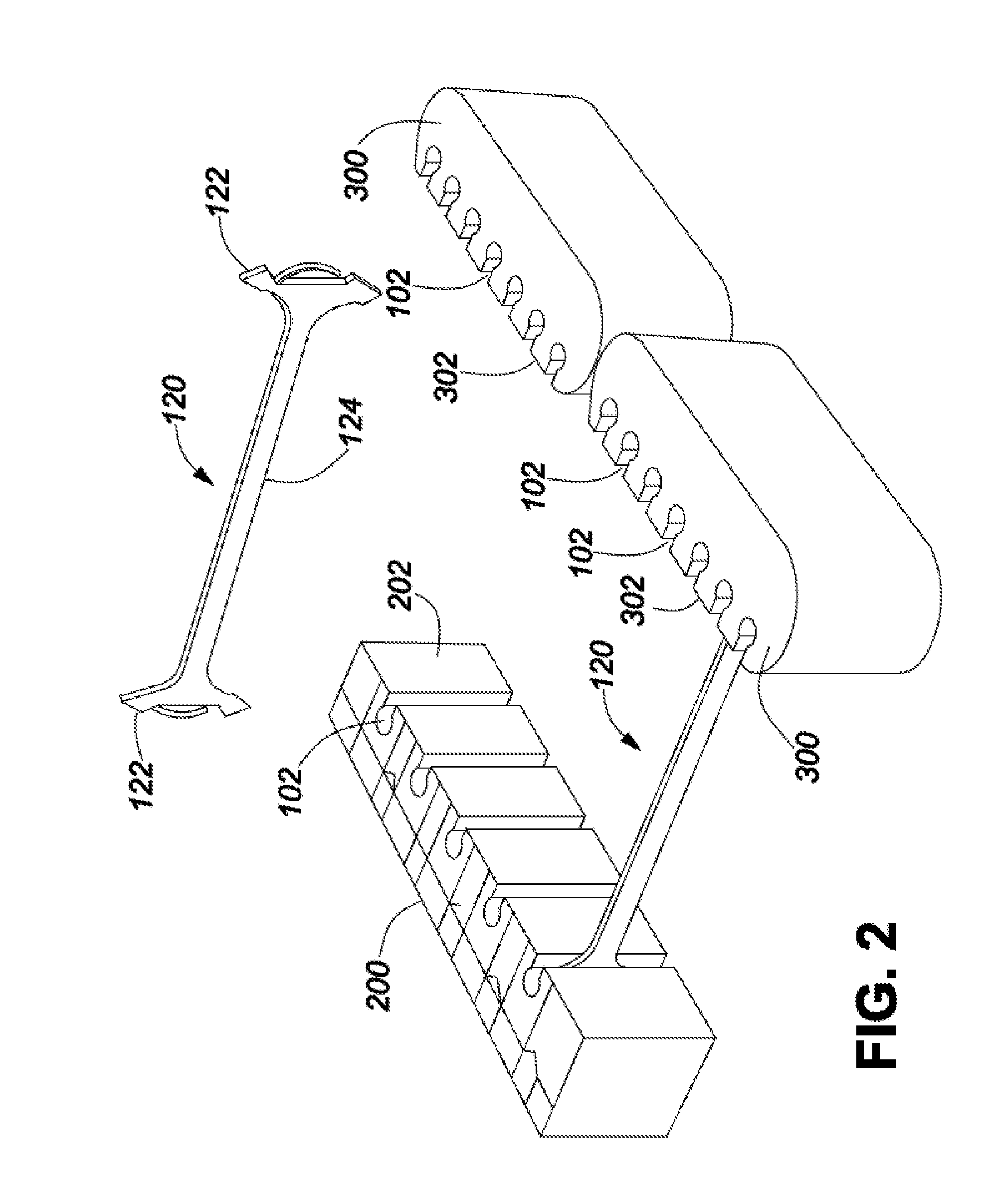Retaining wall
- Summary
- Abstract
- Description
- Claims
- Application Information
AI Technical Summary
Benefits of technology
Problems solved by technology
Method used
Image
Examples
Embodiment Construction
[0057]Before explaining the present invention in detail, it is to be understood that the invention is not limited to the preferred embodiments contained herein. The invention is capable of other embodiments and of being practiced or carried out in a variety of ways. It is to be understood that the phraseology and terminology employed herein are for the purpose of description and not of limitation.
[0058]FIG. 1 and FIGS. 6a to 6e illustrate the method in accordance with the invention of constructing a modular wall 100, such as a retaining wall, by connecting pairs of wall blocks, namely facing blocks 200 and backer blocks 300 in a back-to-back arrangement with an intermediate space filled with a filler material 500. The facing blocks 200 have a decorative surface 210, in the illustrated embodiment. Each facing block 200 is connected by way of connectors 120, with at least one backer block. The facing blocks 200 and backer blocks 300 in the illustrated embodiment have rear faces 214 an...
PUM
 Login to View More
Login to View More Abstract
Description
Claims
Application Information
 Login to View More
Login to View More - R&D
- Intellectual Property
- Life Sciences
- Materials
- Tech Scout
- Unparalleled Data Quality
- Higher Quality Content
- 60% Fewer Hallucinations
Browse by: Latest US Patents, China's latest patents, Technical Efficacy Thesaurus, Application Domain, Technology Topic, Popular Technical Reports.
© 2025 PatSnap. All rights reserved.Legal|Privacy policy|Modern Slavery Act Transparency Statement|Sitemap|About US| Contact US: help@patsnap.com



